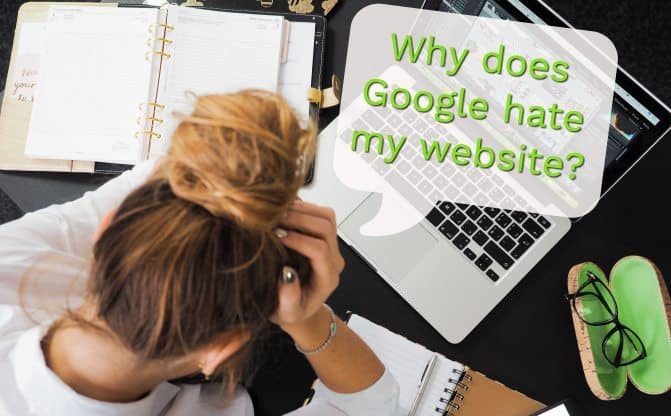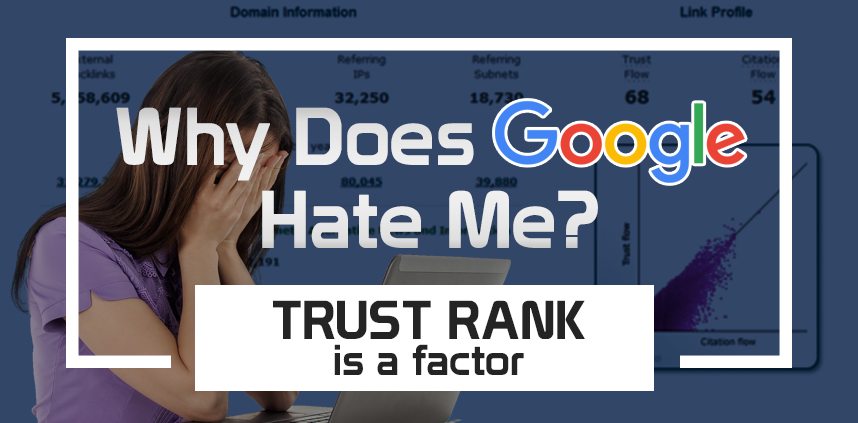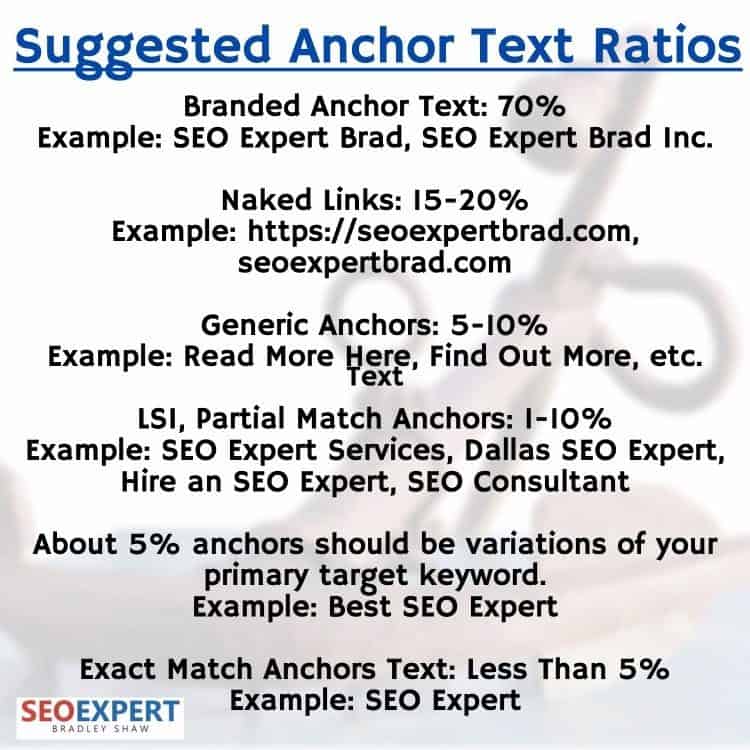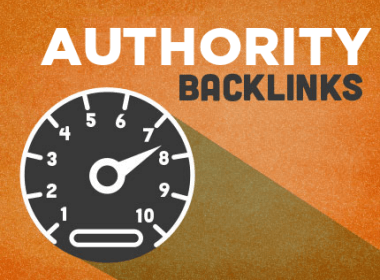Why Does Google Hate My Website? Trustrank Is a Factor
You type your keyword into Google, crossing your fingers.
When the search results appear, you grit your teeth.
You ask one question. “Why does Google hate my website?”
It is a good question – an important question.
What does Google have against you? There must be some reason that your site does not get the respect it deserves. However, what is the reason?

Understanding your Google website trust score is key.
Your site may be artfully designed and written. It might be targeted to your ideal customers. Every page might be keyword optimized. Moreover, yet, it is still not ranking at the top of Google.
Your job is to figure out why.
As it turns out, the answer is a simple one. It is all about your trust rank – your Google trust score.
It is time to stop asking, “Why is my website not ranking?”
Follow my advice, and you will have your site ranking in no time on all the search engines.
What’s Google Doing in 2018?
Google updates its search engine algorithms all the time, like every day. To get the page rank you want, you must know how Google works.
Here are the basics:
- After you launch a site, it sends out robots to crawl it. These “spiders” collect critical data and carry it back to Google.
- It indexes the data from the spiders. Indexing helps them to understand your site. Also, domain age is a factor.
- A user searches a keyword looking for an answer, a service, product, etc. Google’s algorithms sort through sites to return those that are relevant.
That is a straightforward explanation, but it holds true. If you want Google to love your site, give them a reason to love it.
It all comes down to the TrustRank algorithm
In the early days of search, keywords were the only metric used to rank sites.
High keyword density translated to a top search ranking.

Today’s algorithms do not care as much about keyword density. Their goal is to return sites that have the most relevance to users.
The key to earning a top spot on Google is trust. Google Pagerank is no longer a factor.
Google decides which sites to trust based on markers built into its algorithms. They include:
- The indexed age of your site. Google trusts established sites more than new ones.
- The domain authority of your site. Inbound links from authority properties earn trust. The links should not all be from the same site.
- The quality of your content. The content must be of high quality, keyword-topical, compelling, and useful.
Google’s algorithms are proprietary.
We do not know precisely what they target. But these three markers are essential if you want a high search rank.
What Does Google Think You Are Doing?
The answer to, “Why does Google hate my site?” might be a simple one.
Google must crawl and index your site to rank it. If the robots can’t crawl properly, you’re finished.
Checking your site’s indexing is not something they make easy. They don’t provide tools to do it.
The solution is to do one of two things. First, you can use domain.com to see which pages are indexed. Second, check Google Analytics to see which pages aren’t getting organic traffic.
If your site is not properly indexed, you can ask to have it crawled it again.
Can Google Find You?
If you are asking why does Google hate my website, the answer might be simple. It might be that they are blocked from crawling it.
Robots.txt is a text file that webmasters create. It lets Google know which pages to crawl and which to ignore.
The robots.txt file on your site might be getting in the way. For example, it might be disallowing crawling pages or even your entire website.
If your site has a robots.txt file, bots read it before crawling your site.
They will obey any directives there. Code that inhibits bots can affect your site’s page trust.
Is Your Website Poorly Designed?
The design of your site is a factor not to overlook.
If your site’s design is out of date, you might be turning off visitors.
Adhering to their best practices can help.
Here are a few design elements that you might need to update.
- Is your site mobile friendly? Since the Mobilegeddon update, Google penalizes sites that aren’t.
- Are you using Flash? Any code that prevents being read, might hurt you.
- Have you included relevant text in alt tags for images? Google will not be able to read it. Use captions or tags instead.
- Is it easy to navigate? Make sure you have no broken links or confusing menus.
Everything about your site’s design should make it easy to crawl.
If it does not, it is time for an update.
Do Your Visitors Like Your Site?
Google’s search engines priority is delivering relevant search results to users.
Sites that provide value to visitors will always rank higher than those that don’t.
When someone types a keyword on Google, he or she are asking a question. Another way of putting it is that they want answers.
Look at your site and ask yourself if it is doing what Google wants it to do.
A site that answers questions and provides solutions is your goal. If your site does not, then you will need to revamp your content.
Why is My Website Not Ranking?
Sites in violations of Google’s guidelines can incur penalties.
If your site has a penalty, you must act to remedy the issue. Otherwise, your page ranking can take a hit.
There are five common types of Google penalties:
- Unnatural backlinks. This penalty may apply to inbound or outbound links. Also, the types of backlinks. Are they organic or spammy?
- User-generated spam. This applies to sales pitches or off-topic comments. It may also apply to mass comments and posts.
- Cloaking. A black-hat technique frowned on by all search engines. It is used to hide or duplicate pages.
- Shallow content. If your site has duplicate content, you can get this penalty. It can also apply to sites with content that’s not useful.
- Hacking. If your site’s security has been compromised, you will be penalized to protect users.
You can find out if your site has penalties by clicking here.
Look at “Manual Actions” to see your penalties. Taking steps to fix your site is the only way to get the penalties lifted. I am a firm believer in White Hat SEO techniques.
No Copying Content
You already know that Google prefers useful content. It also rewards original websites and penalizes duplicated pages.
Some site owners “spin” text.
They find an article they like and piggyback on it. They may reword critical points, but the ideas are not original.
Google’s algorithms can detect duplicated content. If your site isn’t original, it can prevent you from being one of Google’s trusted sites.
The best remedy to this issue is creating new content.
As you add original, useful material, your Google trustrank should improve.
Is Your Website Stale or Fresh?
When you’re asking why does Google hate my website, consider the age of your content.
Old, stale content won’t earn you the same trust rank as fresh content.

Was the last time you updated your web copy five years ago?
Are new blog posts a rarity?
Ranking websites on Google tend to be frequently updated.
If your content is stale, try creating a blogging schedule. Even one new post a week can up your Google trust score. Be consistent, and you might find that Google loves your site.
Don’t have a blog?
Try adding one. All WordPress themes come with a blog page. Adding a blog is a breeze and can help you earn Google’s trust.
Are Your Keywords Doing Their Job?
Keyword density is not as critical as it used to be.
However, that does not mean you can ignore keywords. If Google is not giving you the love you deserve, it could be because your keyword topics are not correctly targeted.
Keyword research is a must, but it is something many webmasters skip. Even if you think your keywords are ideal, it is a good idea to check them.
One of the simplest tools for keyword research is free. Google’s Keyword Planner is part of Google AdWords. You can use it to find keyword suggestions.
In addition to using your primary keywords, you should be using LSI keywords.
LSI stands for Latent Semantic Indexing. It refers to keywords that are related to your main keyword. They provide contextual clues for search engines to follow.
It is not enough to use your chosen keywords. The rest of your content should use LSI and topical keywords.
Doing so will increase your trust rank.
Is Your Anchor Text Weighing You Down?
When you are creating links, it is tempting to use your keywords as anchor text. It highlights them, and linked keywords have more clout than non-linked keywords.
There’s only one problem.
If you overuse unnatural anchor text, Google will notice. If you do it enough, they may penalize you.
After Google put its Penguin algorithm to work full time, some sites took a hit.
The consensus is that they were using too much target anchor text. Part of Penguin’s job is to analyze anchor text and look for unnatural patterns.
If unnatural anchor text is an issue for your site, there’s an easy fix.
You can use many of these tools to analyze your anchor text. Then, work to reduce your percentage based on the infographic above.
Are Low Quality Backlinks Hurting You?
You already know that backlinks play a role in SEO. They can also hurt your trust score. If you’re wondering why does Google hate my website, low-quality backlinks might be the answer.
If you have a ton of backlinks, it’s time to check them – and change them if you need to. You can use Search Console / Webmaster Tools to evaluate your backlinks.
Unsure about the quality of a backlink?
‘You’ll need to do some research. If you’ve used questionable link-building techniques, you probably have spammy links. You’ll need to check website trust for the sites linked to yours.
Some signs of low-quality links include:
- Young sites with little trust or authority
- Spammy anchor text
- Blogrolls or spammy directories
- Links from pages that are banned, penalized or blacklisted
Identify any spammy links and try to get rid of them.
You can email the webmaster and ask for the link to be removed. As a last resort, you can disavow the link. You can find instructions on how to disavow links here.
Stop Irritating Visitors to Your Site
Content and design aren’t the only things that Google uses to determine if you can be trusted. It also considers the user experience.
Consider the following things while evaluating usability.
- Is your website easy to navigate? Menus should be easy to find. A new user coming to your site should be able to find what they want quickly.
- Do you have broken links? Test every link on your site periodically to keep broken links from affecting your website trust rank. Any broken links should be replaced or removed.
- How quickly do your pages load? A site that’s packed with ads and pop-ups may be slow. The same goes for websites with videos that play automatically. 47% of users expect a page to load in two seconds or less.
- Does your site deliver on its promises? A user who clicks your link should feel that your site provides answers and solutions. If it doesn’t, they’ll likely hit the back button. A high bounce rate can hurt you with Google.
- How quick is your server response time or how long does it take for your first byte to load?
It may help to pay for user testing to determine if your site meets Google’s expectations.
Is your website mobile friendly?
The answer to why your website is not ranking may be changing soon.
You already know that Google prioritizes mobile-friendly sites. Mobile friendliness is about to become more important than ever.
Statistics show that mobile searches outpace desktop searches. Google plans to move to a mobile-first format.
The change will happen in 2018 as a move to the mobile-first index happens.
What does the change mean for you?
If your site isn’t mobile-friendly, it should be.
Does Your Content Grab Readers’ Attention – and Hold It?
You know your content should be original and useful. It also must be compelling to hold users’ attention.
The content on your site must be well-written. However, that does not just mean good grammar and proper spelling. It is got to be irresistible-
That means it should be readable.
Short sentences and paragraphs are a must. An article with lots of white space is more readable than one with dense blocks of text.
You should also think about the words you use. Common words are easier to understand than fancy ones.
Aim for a reading level that most people can understand.
To test readability you can use the Flesch-Kinkaid test.
Be Sociable, Use Social Media Signals
Are you using social media appropriately?
Some site owners use Facebook and Twitter poorly. They do not post regularly, and their social signals do not help them.
According to Google, social media is not a direct ranking factor. However, don’t make the mistake of thinking that social media does not matter.
It does, it drives traffic.
For the best results, maintain an active presence on social media.
Include follow buttons on your website and share content from it. So link your social followers back to your website when possible.
When Will Google Trust Your Website?
The bottom line is that Google will stop hating you when you prove yourself.
Your website must be:
- Filled with quality, readable content
- Responsive to users’ questions and concerns
- Friendly to mobile users
- Linked from high-quality relevant properties
- Updated regularly
- Fast-loading and easy to navigate with a focus on user experience
These things take time.
Make an inventory of areas where you can use improvement. Do what you can to improve it.
Then, finally, you’ll be able to stop asking why does Google hate my site?
You’ll know they love it because your trustrank will prove it.












